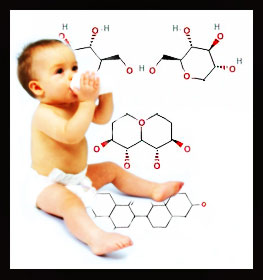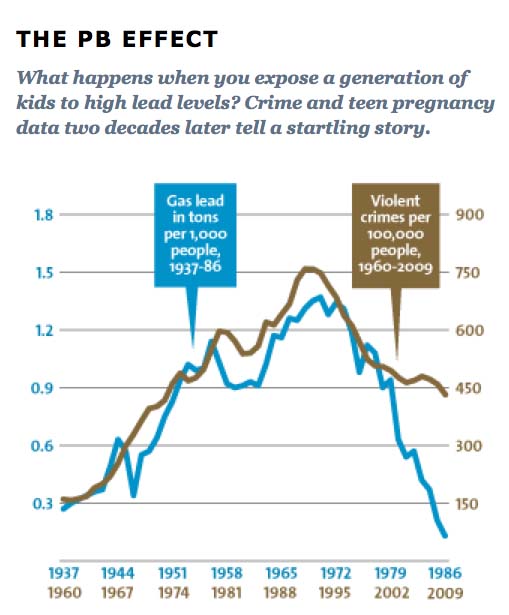Toxicology
Your’re Downwind of Lots of Burning Trucks
 A funny thing happened to Dallas Morning News automobile columnist Terry Box while he was out test driving a new Dodge pick-up truck – it self-immolated and burned to ashes on the side of the road. As he writes about it, his experience is both funny and terrifying. But something he noted in how cars and trucks are made these days caught our eye:
A funny thing happened to Dallas Morning News automobile columnist Terry Box while he was out test driving a new Dodge pick-up truck – it self-immolated and burned to ashes on the side of the road. As he writes about it, his experience is both funny and terrifying. But something he noted in how cars and trucks are made these days caught our eye:
"Open the hood of your late-model car or truck, and you’ll see a half-acre of plastic — actual engine pieces like valve covers, caps and containers for various liquids.
Thirty years ago, most of the pieces under the hood were metal and resistant to fire.
A fire in a modern vehicle burns fast and furiously. What’s intact for the moment can be gone or enveloped in toxic smoke in a matter of seconds."
Yep. When we've described the lovely new cement additive called ASR – Auto Shredder Residue – we've often talked about all the vinyl seats, dashboard and switches that get stipped out of a car and shredded, then thrown into a cement kiln. We really haven't talked about all the plastic in the engine compartment that would also be included in this new "fuel" that TXI has already been permitted to burn at its Midlothian cement plant.
As more and more of every car is made of "soft materials" – that is, not metal – more and more of it becomes fodder for cement kilns. This is material that could be recycled but isn't, and as long as it's cheaper just to burn it, there won't be amrket for recycling it.
Here's the thing, burning plastic creates bad kinds of pollution, including the creation of Dioxin, one of the most potent posions ever discovered by science. The same "toxic smoke" Terry Box saw pouring off of his burning Ram pick-up is created when you throw the same plastic parts into a cement kiln. The cement industry would like you to think that all of that is taken care of by the polluton control measures installed at the kilns, but it's not. There's no real time Dioxin montoring, much less any kind of monitoring for the host of other exotic fumes coming off burning plastic of various kinds. They barely even know what or how to test for such pollutants, but that doesn't keep the cement industry from marketing its kilns as "Long, Hot, and Good for America"™
If you're an old-timer, you might remember an earlier episode or two that occurred when the cement industry, including TXI, assured everyone that it could burn hazardous waste and make it completely disappear into water vapor. Remind us, how did that turn out?
Another Study Links Autism to Air Pollution
 The more Ozone and Particulate Matter pollution a baby in the womb is exposed to, the more likely he or she will be born with autism according to a new UCLA study published March 1st in Environmental Health Perspectives, a peer-reviewed journal published by the National Institute of Environmental Health Sciences. It's the largest study of its kind to date and is the first to link autism with ozone, or smog, levels.
The more Ozone and Particulate Matter pollution a baby in the womb is exposed to, the more likely he or she will be born with autism according to a new UCLA study published March 1st in Environmental Health Perspectives, a peer-reviewed journal published by the National Institute of Environmental Health Sciences. It's the largest study of its kind to date and is the first to link autism with ozone, or smog, levels.
Researchers compared levels of air pollutants, mostly related to vehicle traffic, during pregnancy gestation periods of 7,603 children with autism and 75,635 children without autism, born from 1995 to 2006 in Los Angeles. Babies at the 75th percentile of exposure to toxins had a 8 percent to 10 percent higher risk of autism than babies at the bottom 25th percentile, the study said. Ozone and fine particulates had the strongest association with autism.
Using government air monitoring stations, researchers estimated average exposures during pregnancy to carbon monoxide, nitrogen dioxide, nitric oxide, ozone and particulate matter. The study adjusted for factors that include maternal age, birthplace, race and education. Using birth certificates, researchers compared control children with non-control children who had matching birth year, sex and gestational age at birth.
"These findings are of concern, since traffic-related air pollution is ubiquitous," said Dr. Beate Ritz, chair of UCLA's Department of Epidemiology and the study's senior author. She said she was reluctant to advise expectant mothers to leave LA or polluted cities, because that's not an option for many. "We can't tell them to not breathe or not go outside or not go to work," she said. She did recommend avoiding sitting in traffic, when pollutant exposure is worst."
Autism is a spectrum of disorders ranging from a profound inability to communicate and mental retardation to milder symptoms seen in Asperger's syndrome. The Centers for Disease Control and Prevention estimates that autism affects one in every 88 children born in the U.S., a 25 percent increase from 2006.
Research on autism and exposure to chemicals has been limited. Studies from 2006 and 2010 found an association between autism and air pollutants from industries and other sources.
A study in 2010 was the first to look at autism and toxins specifically from auto exhaust. The study, based in California, reported that children born to mothers living within 9/10 mile of a freeway during pregnancy were more likely to be diagnosed with autism than children whose mothers lived more than 1/4 mile from a freeway. However, the sample size — 304 autism cases and 259 controls — was much smaller than the just-published UCLA study.
Most policy discussions concerning air pollution in DFW surround the damage done to lungs, or maybe hearts and lungs. Rarely are the other, now well-known associations between air pollution and birth defects, or air pollution and brain function mentioned. And even rarer is the fact mentioned that these harms are often occurring at levels of pollution considered to be officially "safe" or at least legal. We really have no idea what the assault on our bodies by chemicals we involuntarily breathe actually can do to our health over the long term. That's why we should minimize exposure to them as much as possible. And that means limiting the chemicals' movements, not those of expectant moms.
Science Outpacing EPA Lead Contamination Standards
 People who don't know any better expect agencies that are charged with removing environmental threats to public health to be on top of the best and most recent science. However, because of the glacial pace of government environmental oversight, that's hardly ever true. It takes years, and sometimes decades for "safe standards" to be updated or created. When they are, they're sometimes instantly obsolete because a new generation of studies has shown harm at even lower levels of exposure. This is why impacted citizens have to have a DIY philosophy to seek out the most recent science themselves – you can't depend on government to have already incorporated it or be using it as a guide.
People who don't know any better expect agencies that are charged with removing environmental threats to public health to be on top of the best and most recent science. However, because of the glacial pace of government environmental oversight, that's hardly ever true. It takes years, and sometimes decades for "safe standards" to be updated or created. When they are, they're sometimes instantly obsolete because a new generation of studies has shown harm at even lower levels of exposure. This is why impacted citizens have to have a DIY philosophy to seek out the most recent science themselves – you can't depend on government to have already incorporated it or be using it as a guide.
A particularly depressing example is the way the US EPA is dealing with lead contamination and its soil and dust standards. The last time these were updated, Bill Clinton was President. There's been a lot of science produced on lead poisoning since then and all of it points to lower and lower levels of exposure causing harm. In fact, there's a consensus among researchers that there is NO safe level of exposure to lead. It's not that every exposure will harm you, it's that every exposure is capable of doing harm – especially to children.
There's also overwhelming public policy consensus that exposures to lead should be minimized as much as possible. Reducing exposure to lead is now linked, not just to better physical health, i.e. less cancer, liver disease, etc., but to higher IQs and test scores in schools, less anti-social behavior, and even less crime. In California, the lead standard for soil has been reduced to 80 parts per million, compared to the circa-2000 EPA standard still in place of 400 ppm.
Acting in recognition of these facts, for the first time in over 20 years the federal Centers for Disease Control revised its lead-in-blood standard for children in 2012, cutting in half the amount it said should trigger a response from parent and doctor. As a consequence, the EPA's own Children's Health Protection Advisory Committee sent a letter to then-Administrator Lisa Jackson calling for the agency's "immediate and urgent attention" to revise the nation's lead dust and soil standards because they had been based on the previous, now-obsolete CDC standard.
But in the latest installment of her year long award-winning series of articles on the topic, USA TODAY's Allison Young quotes EPA officials as saying they have no current plans to update those standards to reflect the new CDC lead in blood action level. This, despite studying the issue since 2009. What difference does it make?
In places like Frisco, Texas that experienced decades of lead contamination from a poorly and often illegally-operated lead smelter, it means the EPA will allow what it knows to be dangerous levels of lead to remain in soil and dust that otherwise would have to be cleaned-up.
This is Exhibit A why citizens cannot leave environmental protection to government agencies alone. This is why Frisco residents, organized by Frisco Unleaded, are trying to intervene directly in the closure and clean-up of the Exide lead smelter. If you leave it up to the state or EPA, you won't have the best science, or the most protective clean-up. You will have settled for whatever government standard was in place at the time, no matter how outdated or unsafe. If you're a parent in Frisco, that shouldn't be YOUR standard.
New Report Says Burning Coal in Europe Costs Billions in Health Care
 Many of you are aware that former EPA Regional Administrator Al Armendariz is now heading-up a Sierra Club effort to close the remaining old coal plants in East and Central Texas that have plagued downwind communities, including DFW, for decades. One big reason is the direct connection between the kinds of pollution these plants release, like Particulate Matter, and their known health effects. Based on past studies, scientists are able to determine what levels of air pollution cause what level of medical responses.
Many of you are aware that former EPA Regional Administrator Al Armendariz is now heading-up a Sierra Club effort to close the remaining old coal plants in East and Central Texas that have plagued downwind communities, including DFW, for decades. One big reason is the direct connection between the kinds of pollution these plants release, like Particulate Matter, and their known health effects. Based on past studies, scientists are able to determine what levels of air pollution cause what level of medical responses.
Last week, something called the Health and Environmental Alliance released a report that used that methodology to add up what it said was all the early deaths, hospitalizations, medications and reduced productivity caused by breathing coal plant pollution in Europe and came up with a total of $55 billion a year. It's the first-ever calculation of the effects of coal-fired power generation on chronic lung disease and some heart conditions for the entire continent.
Significantly, it has found that the effects of the pollution which coal incineration causes are not confined to people living close to power stations, but can affect entire populations in varying degrees.
Burning coal to generate electricity worsens a group of conditions known as chronic obstructive pulmonary diseases, the report said. These include emphysema, breathing obstructions and bronchitis. It also aggravates asthma and worsens heart disease.
HEAL says the elderly and the young are at particular risk, with lung damage sustained in childhood reducing the chances of achieving maximum lung function in adult life.
We haven't seen any similar studies of the costs of breathing coal plant pollution in Texas or DFW, but they could be large since we're directly downwind of the state's "lignite belt" where almost all the older, dirtier coal plants are located.
Early Life Exposure to BPA Linked to Asthma Onset
 Children exposed to routine levels of the chemical bisphenol A (BPA) in the first seven years of life are more likely to have asthma, according to a new Columbia University Medical Center study.
Children exposed to routine levels of the chemical bisphenol A (BPA) in the first seven years of life are more likely to have asthma, according to a new Columbia University Medical Center study.
The children studied had roughly the same concentrations of BPA as the average for U.S. kids. “We saw increased risk of asthma at fairly routine, low doses of BPA,” said Dr. Kathleen Donohue, an instructor in clinical medicine at Columbia University Medical Center and lead author of the study.
The study, which tested 568 children and their mothers in New York City, is the first to link early childhood exposure to BPA with asthma. Studies with lab mice, however, have found a similar link.
Children with higher levels of BPA at ages 3, 5 and 7 had increased odds of developing the respiratory disease when they were between 5 and 12.
BPA is used to make polycarbonate plastics and is found in many canned foods and beverages, on paper receipts, and in dental sealants. As a result, more than 90 percent of Americans have traces of BPA in their bodies.
Medical experts for decades have been trying to figure out what has caused asthma rates to skyrocket in children throughout much of the world, beginning in the 1980s. Many suspect that it might have something to do with early-life exposures and changes in immune systems causing inflammation.
If one then adds this injury to increased levels of smog, VOCs, or particulate matter that can set such inflammation off, it's not hard to imagine a conspiracy of chemicals causing a new rise in an old ailment.
One out of every 10 U.S. children has been diagnosed with asthma, and the rate is one out of every six for black children, according to 2011 data from the Centers For Disease Control and Prevention.
Because it’s the first study of its kind, it’s too early to blame BPA for asthma, Harley said. But the chemical is increasingly linked to more and more children’s health problems.
“This is another study showing an association between health outcomes and early life exposure with BPA,” she said. “Several studies look at children’s behavior, development, thyroid hormones, now an association with asthma. There’s really starting to be accumulation of evidence.”
The study, which tested 568 children and their mothers in New York City, is the first to link early childhood exposure to bisphenol A (BPA) with asthma. Studies with lab mice, however, have found a similar link.

|
| JasonUnbound/flickr |
| One out of every ten U.S. children has been diagnosed with asthma. |
A Columbia University research team reported that children with higher levels of BPA at ages 3, 5 and 7 had increased odds of developing the respiratory disease when they were between 5 and 12.
– See more at: http://www.environmentalhealthnews.org/ehs/news/2013/asthma-and-bpa#sthash.zFBBJBLc.dpuf
New Texas Study Confirms That Smog is Bad For Your Heart
 Heart attacks are more common within just hours of high ozone and/or particulate matter levels according to a new large study of air pollution health effects that was sponsored by Rice University.
Heart attacks are more common within just hours of high ozone and/or particulate matter levels according to a new large study of air pollution health effects that was sponsored by Rice University.
Evidence already links airborne particles with heart disease and lung problems but the new findings are the first to show that high ozone may immediately raise the risk that a person's heart will stop beating.
"Heart patients should consider when there are high ozone levels that they should take extra care of themselves," lead author Katherine Ensor of Rice University in Houston told Reuters Health.
Ensor and her colleagues looked at Houston hospital records from 2004 to 2011 and compared them with records from hospitals outside the city.
Cardiac arrest risk went up by 4.4 percent for every 20 parts per billion of ozone above average (50-60 ppb) within the previous three hours. For every increase by 6 micrograms of fine particulates per cubic meter of air in the prior two days, cardiac arrests rose by 4.6 percent. In the summer, it's not unuual for DFW monitors to record 1-hour ozone levels of over 100 ppb or more, and 8-hur averages in the 80 to 90 ppb range. There are only two urban monitors for PM pollution, but those have been trending up over the last few years as ozone levels have been rising as well.
Because there are many risk factors for cardiac arrest, an additional link to ozone could have big implications for people with chronic medical conditions living in urban areas, according to Dr. Comilla Sasson of the University of Colorado, who was not involved in the new study.
Congressional Report: Environmental Causes of Breast Cancer Must be Researched
 "Most cases of breast cancer “occur in people with no family history,” suggesting that “environmental factors — broadly defined — must play a major role in the etiology of the disease.” That's the conclusion of something called the Interagency Breast Cancer and Environmental Research Coordinating Committee, which came out with a report last week.
"Most cases of breast cancer “occur in people with no family history,” suggesting that “environmental factors — broadly defined — must play a major role in the etiology of the disease.” That's the conclusion of something called the Interagency Breast Cancer and Environmental Research Coordinating Committee, which came out with a report last week.
In 2012, Breast cancer was diagnosed in 227,000 women, killed 40,000, and cost more than $17 billion to treat in the United States.
Yet only a fraction of federal research funding has gone toward examining links between breast cancer and ubiquitous chemicals such as the plastic hardening agent bisphenol A; the herbicide atrazine; and dioxin, a byproduct of plastics manufacturing and burning, says the report, prepared for Health and Human Services Secretary Kathleen Sebelius.
“National survey data show that many of these chemicals are present in the blood or urine of children and adults in the United States, and some EDCs are present in 100 percent of the people sampled. Exposure to such compounds early in life can be especially dangerous, the report says.
All told, some 84,000 chemicals are registered for use in the United States. But complete toxicological screening data are available for only 7 percent of these substances, says the report, which calls for “enhanced testing of chemicals, especially classes of chemicals combined together as a mixture, for effects on the mammary gland and breast …”
“Prevention needs to be as important as other investments that are made in screening, treatment and access to care,” Jeanne Rizzo, co-chair of the committee and president of the San Francisco-based Breast Cancer Fund said in an interview. “There really is a problem, and until we address it we’re going to continue to have a quarter of a million new cases every year.”
The report’s release comes three months after a Center for Public Integrity article detailing a study of female plastic automotive parts workers in Windsor, Ontario. That study found that women employed in the chemical-intensive industry were nearly five times as likely to develop breast cancer, prior to menopause, as women in a control group.
“That was essentially an uncontrolled human study,” Rizzo said of the Windsor workers. “We can’t do that. We need to learn from animal studies.”
In the United States, an estimated 150,000 female workers in the plastics and synthetic rubber industries are likely exposed to many of the same chemicals as the women in Windsor, including polyvinyl chloride, or PVC, plastic; acrylonitrile; formaldehyde and styrene.
At least 216 chemicals, including endocrine-disrupting substances like bisphenol A, have been associated with mammary gland tumors in animals. Endocrine-disrupting chemicals, or EDCs, are used to make plastics and pesticides and found in products such as furniture, metal food cans and cosmetics.
But environmental exposures have gotten relatively little attention from researchers.
The National Institutes of Health spent almost $2.4 billion on 2,910 breast cancer research projects from fiscal year 2008 through fiscal year 2010. But only about 27 percent of these projects had to do with prevention, and just 10 percent could be considered “environmental health research.”
Of the $2.8 billion appropriated by Congress from 1992 through 2012 for the Department of Defense Breast Cancer Research Program, 75 percent went toward “basic biology and treatment research, with only 3 percent for prevention and cancer control projects."
The committee recommends that researchers prioritize “chemicals that are produced in high volumes for which there is biologically plausible evidence of their role in the development of breast cancer.”
It also suggests that regulators improve oversight of “cosmetics and personal care products as well as household cleaning and food containment products,” and step up environmental monitoring, especially of “underserved and under-researched groups as well as ‘fenceline’ communities that are in close proximity to industry or waste sites.”
Environmental Health News Round-Up
 Current events in Dallas and Frisco kept us off our usual Environmental Health beat for awhile. Here's a round-up to get caught-up with some of the most important recent news:
Current events in Dallas and Frisco kept us off our usual Environmental Health beat for awhile. Here's a round-up to get caught-up with some of the most important recent news:
Secondhand Smoke is a Big Source of Lead – Children in families with one smoker had lead levels 14 percent higher than children who live with non-smokers. That number jumped to 24 percent if children lived with two or more smokers according to a new John Hopkins study. The article is frustrating however because it doesn't say where the lead in cigarettes comes form
Phthalates Linked to Obesity in African-Americans – A new study shows that African-American children who have high levels of an environmental contaminant called phthalates are more likely to be obese.The study, published in Environmental Health Perspectives on Feb. 5, showed that African-American children had higher levels of the chemical compared to white and Hispanic children. Phthalates are found in plastics but also can be found in the gas patch and in the emissions of waste-burning cement plants like the ones in Midlothian.
The Cancer Risk of Fire Fighters – Tony Stefani used to be a firefighter and a cancer patient. The two, he believes, had something to do with each other.Stefani was a firefighter in his native San Francisco for 28 years, nearly half of them as captain of a rescue squad. But the profession he loved may have nearly cost him his health. The job involved breathing all kinds of substances, from the diesel fumes of fire engines to smoke laced with flame retardants in people's homes. That contact, Stefani believes, is the reason for his diagnosis of transitional cell carcinoma, a rare cancer in his pelvis, in 2001. He soon learned that hundreds of active and retired firefighters also had various kinds of cancer.
Pesticides Linked to Type 2 Diabetes – Pesticides in food, air and water may be directly linked with the development of type 2 diabetes, regardless of a person's age, gender or body mass index, a new Spanish research study has found. These substances tend to concentrate in body fat, and they might be one of the reasons why obese people are more likely to develop diabetes, since the greater the fat, the higher the pesticide concentrations in the body, researchers from the University of Granada found.
PAH's Make Cockroach Allergies More Likely – Results from a study published on Feb. 6 in the Journal of Allergy and Clinical Immunology found that exposure to a certain type of air pollution found in diesel exhaust and other combustion-related byproducts can increase the likelihood of developing a cockroach allergy. Researchers studied a common class of combustion byproducts called polycyclic aromatic hydrocarbons, which are products of combustion.
Another Study Ties Air Pollution to Lower Birth Weights – A pregnant woman's exposure to outdoor air pollution may increase the risk of her baby being born at a lower birth weight, according to a large multinational study. Researchers from 14 sites in nine countries, including Seoul, South Korea; Atlanta; and Vancouver, British Columbia, compiled the average levels of particulate air pollution to which women were exposed during the course of their pregnancy. Sources of particulate air pollution include traffic exhaust, power plants and even dust. The researchers found that for every 10-microgram increase of pollution particles per cubic meter of air, birth weight decreased by 8.9 grams, roughly one-third of an ounce, and infants were 3 percent more likely to be a low birth weight. An infant is considered low birth weight if he or she weighs less than 5 pounds 8 ounces at birth. Low birth weight is a known risk factor for infant mortality as well as heart, breathing and behavior problems later in life.
Dallas-based Gulf War Illness Study Points to Low Level Chemical Exposure; DMN Ignores
 Shortly before Christmas, a long multi-year toxicological investigation of Gulf War Illness headed up by UT Southwestern's Dr. Robert Haley announced its final conclusions. This is a study that's received lots of attention, and many consider it the definitive work on the Illness to date. Because it involved a local Dallas medical institution and a renowned local scientist, the Morning News traced the study's progress year-to-year, with its penultimate update appearing right after Thanksgiving.
Shortly before Christmas, a long multi-year toxicological investigation of Gulf War Illness headed up by UT Southwestern's Dr. Robert Haley announced its final conclusions. This is a study that's received lots of attention, and many consider it the definitive work on the Illness to date. Because it involved a local Dallas medical institution and a renowned local scientist, the Morning News traced the study's progress year-to-year, with its penultimate update appearing right after Thanksgiving.
Reporting that the study had confirmed that actual physical nerve damage in veterans, and not psychological problems, was the underlying common denominator of the Illness' many different reported symptoms, including breathing difficulties, increased heart rate, decreased sexual function, perspiration and other body functions.
You see, a lot of Very Serious People didn't believe the Gulf War Vets who reported being Ill because they didn't exhibit any of the classic signs of any specific diseases or condition. As it turns out, those same Very Serious People thought the same thing about citizens who were regularly getting shat on by industrial pollution and experienced many of the same kinds of symptoms as the Vets.
Doesn't this sound awfully familiar to some of you?
“Many of these veterans have been told that there is nothing wrong with them,” Haley said Monday in an interview. “Our hope is that the physicians treating our veterans will read this study and recognize the symptoms, and that this will lead to better treatments.”
In the last sentence of the November DMN piece, Haley assured the reporter that the upcoming final chapter of his study would be decisive. Having shown that the Illness was in fact based in physiology and not psychology, Haley was ready now to point the finger at the trigger mechanism itself – what thing or things were causing this physiological response in so many Vets.
“We’re going to show proof of what causes this,” he said. “It will be a huge study with convincing evidence.”
In December, that final chapter was published in a peer-reviewed paper for a respected journal. The New York Times ran an article. And the conclusions were very controversial indeed.
"The paper, published in the journal Neuroepidemiology, tries to rebut the longstanding Pentagon position, supported by many scientists, that neurotoxins, particularly sarin gas, could not have carried far enough to sicken American forces.
The authors are James J. Tuite and Dr. Robert Haley, who has written several papers asserting links between chemical exposures and gulf war illnesses. They assembled data from meteorological and intelligence reports to support their thesis that American bombs were powerful enough to propel sarin from depots in Muthanna and Falluja high into the atmosphere, where winds whisked it hundreds of miles south to the Saudi border.
Once over the American encampments, the toxic plume could have stalled and fallen back to the surface because of weather conditions, the paper says. Though troops would have been exposed to low levels of the agent, the authors assert that the exposures may have continued for several days, increasing their impact."
So the Gulf War Vets not only suffered from some of the same symptoms as downwinders, but they get exposed in the same way downwinders do – a little bit every day. This is the insidious conclusion of the report – that amounts of poison that the regulatory agencies (in this case, the Pentagon) tell you should result in no harm, actually cause harm.
Some scientists studying Gulf War Illness disagree with Dr. Haley. They still hold fast that stress or other psychological conditions cause the Illness. But it's the conclusion of one of the best and most thorough studies of Gulf War Illness ever conducted.
However, you'd be hard-pressed to find anything about it in the Morning News. Unbelievably, the paper didn't cover the final, headline-making conclusion of a study it's been following meticulously for years now. We don't know if the challenge to the status quo was the reason, but it seems like a strange time for the News to wig out.
But taking Dr. Haley's conclusions and overlaying them with what we know about the toxic soup that downwinders often end up being exposed to on a routine basis, one can't help but see the similarities, right down to the "they must be imagining their symptoms" response of the Powers-That-Be. Whether it's the Pentagon, the TCEQ, or EPA, Dr. Haley's research challenges the way we diagnose and protect human health from low-level chemical invasions.
Was Lead Contamination the Major Cause of 20th Century American Crime?
 That's the hypothesis that Kevin Drum makes in the latest issue of Mother Jones, and he has a lot of evidence to back it up.
That's the hypothesis that Kevin Drum makes in the latest issue of Mother Jones, and he has a lot of evidence to back it up.
For years, scientists have known about the link between lead exposure in children and decreasing IQ levels. More recently, researchers have discovered more subtle effects in terms of anti-social behavior and AHHD diagnosis. Now, modern toxicology is to the point where most leading researchers say there is no level of lead a child can be exposed to that doesn't have the potential to effect his or her personality.
What if you were to use what we know now about the effects of lead contamination on young minds and playback the last 70 years of American history?
The biggest source of lead in the postwar era, it turns out, wasn't paint. It was leaded gasoline. And if you chart the rise and fall of atmospheric lead caused by the rise and fall of leaded gasoline consumption, you get a pretty simple upside-down U: Lead emissions from tailpipes rose steadily from the early '40s through the early '70s, nearly quadrupling over that period. Then, as unleaded gasoline began to replace leaded gasoline, emissions plummeted.
Gasoline lead may explain as much as 90 percent of the rise and fall of violent crime over the past half century.Intriguingly, violent crime rates followed the same upside-down U pattern. The only thing different was the time period: Crime rates rose dramatically in the '60s through the '80s, and then began dropping steadily starting in the early '90s. The two curves looked eerily identical, but were offset by about 20 years.
So Nevin dove in further, digging up detailed data on lead emissions and crime rates to see if the similarity of the curves was as good as it seemed. It turned out to be even better: In a 2000 paper (PDF) he concluded that if you add a lag time of 23 years, lead emissions from automobiles explain 90 percent of the variation in violent crime in America. Toddlers who ingested high levels of lead in the '40s and '50s really were more likely to become violent criminals in the '60s, '70s, and '80s.
Dr. Howard Mielke of Tulane, who's analyzed the blood lead data collected from Frisco and found the samples higher than the state average, makes an appearance in Drum's article because of a large new study overlaying neighborhood lead exposure to neighborhood crime in six American cities. They match up precisely.
Read the short version of the article here. Here's an interview with Dr. Mielke.
No one knew a lead additive in gasoline would produce such an impact. Because we didn't do the toxicology. Lead was introduced in gasoline in the 1920's when the modern industrial age was just hitting its stride. Now there are some 80,000 chemicals in the marketplace, only a handful of which have been tested thoroughly, including lead, because we're still not doing the toxicology BEFORE the chemical is used in widespread commerce.
Cancer. Birth Defects. Endocrine Disruptors. Why is it so inconceivable to some that the thousands of untested chemicals coursing through the veins of our economy can't have unintended consequences just like leaded gasoline, on their own or in combination with each other? What new epidemics are we instigating even now?
